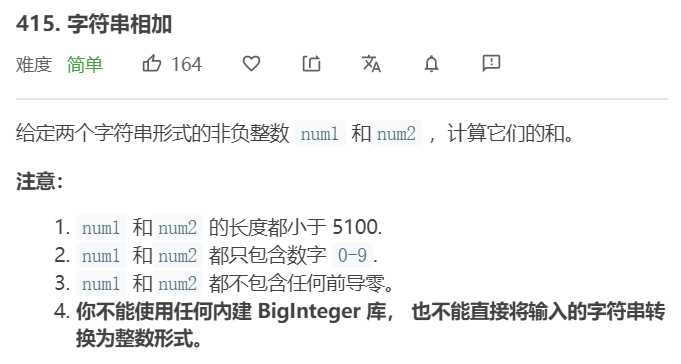标签:http string 复杂 str ima 算法 width 首部 头部

双指针
解题思路:
算法流程: 设定 i,j 两指针分别指向 num1,num2 尾部,模拟人工加法;
计算进位: 计算 carry = tmp // 10,代表当前位相加是否产生进位;
添加当前位: 计算 tmp = n1 + n2 + carry,并将当前位 tmp % 10 添加至 res 头部;
索引溢出处理: 当指针 i或j 走过数字首部后,给 n1,n2 赋值为 0,相当于给 num1,num2 中长度较短的数字前面填 0,以便后续计算。
当遍历完 num1,num2 后跳出循环,并根据 carry 值决定是否在头部添加进位 1,最终返回 res 即可。
复杂度分析:
时间复杂度 O(max(M,N))O(max(M,N)):其中 M,N为 22 数字长度,按位遍历一遍数字(以较长的数字为准);
空间复杂度 O(1):指针与变量使用常数大小空间。
class Solution:
def addStrings(self, num1: str, num2: str) -> str:
res = ‘‘
# carry表示商
i, j, carry = len(num1)-1, len(num2)-1, 0
while i>=0 or j>=0:
n1 = int(num1[i]) if i >= 0 else 0
n2 = int(num2[j]) if j >= 0 else 0
tmp = n1 + n2 + carry
carry = tmp // 10
# tmp % 10表示余数
res = str(tmp % 10) + res
i, j = i-1, j-1
return ‘1‘+res if carry else res
标签:http string 复杂 str ima 算法 width 首部 头部
原文地址:https://www.cnblogs.com/GumpYan/p/13040793.html